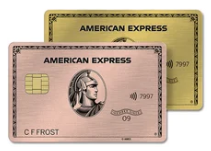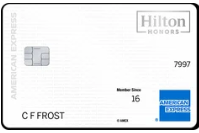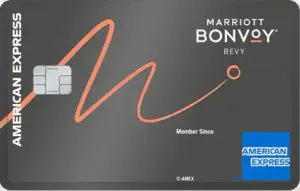Table Of Content
Let me guess: you want to buy an RV. All those months of dreaming about the long drives and scenic routes have gotten into you and you want to finally get your hands behind the wheel of your own recreational vehicle.
But, to make the dream a reality isn’t that easy. Unless you have a trunkful of cash stashed somewhere, you’re not probably thinking of buying a motorhome in cash but looking to apply for a loan.
Before you make the big step, read this guide to know more about financing your RV purchase.
Types of RVs and Motorhomes
The price of an RV (just like any other vehicle) will depend on its use and features.
If you are planning to use it for occasional weekend trips, you can stick with a smaller and cheaper model. But if you’re looking to make it your actual home, you would probably have to shell out more money so you can get one that has a bigger space and more amenities.
Kampgrounds of America suggests these four types of RVs and motorhomes:
- Travel Trailers. Unlike most other RVs, trailers depend on another vehicle for movement. Usually, a car or truck tows a travel trailer. They’re cheaper but of course, they’re smaller.
- Class B. Class B vehicles are usually as long as the average van and compared to the other models, they are easier to drive and maneuver. The price range is usually between $40,000 to $80,000.
- Class C. Class C campers are RVs whose cab extends over the cockpit. They are much roomier and more comfortable than trailers. The cost is between $50,000 to $100,000.
- Class A. When you’re looking for more convenience, features, and comfort, a Class A vehicle will do the trick. They have more space and better features, but obviously, cost more. They carry a price tag of $500,000 or more.
RV Loan – How Does It Work?
There is hardly any difference for the loan term and financing details for a new or used RV.
On average, RV loans are from 5-15 years only. However, many banks, credit unions, and other finance companies will agree to a term up to 20 years for loans of $500,000 or more as long as there is acceptable collateral.
You may find some lenders that will offer a 20-year balloon payment option on selected RVs – which can be very useful in some cases. They can also give flexible financing terms so that buyers can opt to make extra payments from time to time or totally pay off the loan before the end of the term.
After you’ve done your research on the rates and terms you can get for your RV loan, the next step is to get a pre-approval from the lender.
A pre-approved loan will give you a better bargaining chip when you start negotiating with the RV dealer.
Fixed Vs Variable RV Loan
Borrowers can also opt to choose between a fixed rate loan or a variable loan. The choice will affect the lender’s decision on how low the RV Loan Rate will be since the two types of the loan have two contrasting payment plan styles. The lender and the buyer (especially if he transacts online) can use a fixed vs variable loan calculator to evaluate the different options.
Once the lender and the buyer arrive at a figure for the rate that satisfies the lender’s margin requirements and the buyer’s total budget, the loan officer will take it from there.
He will submit the application for an approved RV low-interest rate loan.
Required Credit Score For an RV Loan
Let us warn you that shopping for the best RV financing is not a walk in the park. For one, you have to be meticulous – you don’t want to miss any lender who can give you a good offer. With the right RV financing, you may be able to save a lot of money in your purchase of a good RV.
Of course, your current credit score will play a very crucial role in enabling you to get some awesome financing deals.
Most credit reporting websites can provide you with all the details that you need in case you have to dispute something on your credit report such as an erroneous entry. If you come across such an error, you should try to remedy the situation as fast as you can. As long as the error is on your report, your credit score will continue to suffer and would most likely affect your chances of getting the financing that you want for your RV.
The magic number here is 600 – so, if you have a score that is higher than this, you’re a good candidate to get that decent financing rates on RV loans.
Down Payment
The more cash you offer upfront, the better APR and terms of repayment you’re likely to get. A good number for the down payment is 10% of the total cost of the RV if you can afford it. This will lessen the amount that you have to borrow but will also cut down monthly payments. Plus, it gives you a foothold when you’re haggling for the rates and terms of your financing.
RV Warranty
If you’re buying a previously-owned RV, chances are, the warranty will fall under the state of purchase’s implied warranty law. This type of RV warranty limits its coverage to the condition of the used vehicle or boat at the time of purchase. Often, when you are buying or financing a used motorhome or boat, you will need an inspector to assess the item. The inspector’s assessment will set the cost of the RV Warranty.
But in case of a new RV or boat, the actual recreational vehicle manufacturer decides pre-sale on the warranty. Regardless of what type, design, and style of the motorhome (Class A, B, or C, Holiday Rambler, Fifth Wheel, etc) or boat (yacht, sailboat, motorboat, ski boat, etc.) you are looking at, the manufacturer will have its own rules and regulations regarding warranty.
A warranty is a safety net and a provider of peace of mind to the users of the recreational vehicle.
It assures them that they will spend their time enjoying the ride and wasting their time on the side of the road or in a repair shop.
Financing an RV Purchase
You can find several ways to finance your new or used motorhome or RV. You can go directly to the RV dealership and apply for financing.
Motorhome Dealers
Dealers act as the go-between for the buyer and the lender. This will result in a higher interest rate for your loan compared to what your bank will normally give you. This is because dealers usually add a margin on the interest rates to also earn from the loan.
Take note that you can still negotiate to bring the rate down. Motorhome dealers often launch their own promotional activities and sometimes, they slash interest rates so that they are lower than your bank’s rate.
Also, a dealer may be more open to granting a loan to a buyer with bad credit – but expect it to carry a higher rate.
Bank/Credit Unions
Both banks and credit unions provide interest rates for RV loans that are within the prevailing market rates, so they are lower than a dealership’s marked up rates.
The downside is, the rate they will quote is normally the final offer and there’s no more wiggle room to bring it down. Another advantage of getting your financing through a bank is that they are more likely to be lenient should you fall behind on your payments. This is because you tend to already have an existing relationship with the bank that would finance your purchase.
On top of this, the bank or credit union may pre-approve your loan so that you can proceed to your dealer armed with a pre-approval letter.
This can help you negotiate for a lower interest rate with the dealer.
Personal Loans
You can also try to get financing via a personal loan to fund your RV purchase.
You may be in a situation where your credit or income bars your door to the dealership or recreational loans. Don’t agonize because you can still try to get a personal loan. Personal loans are available from banks and other financial institutions. Some lenders open their personal loans to borrowers with credit scores as low as 580, so this gives you a wider chance to get approval compared to other forms of financing.
Before you decide if you need a personal loan, please make sure that you understand the downsides. Lenders place a cap on how much money you can borrow. Most lenders will only lend a maximum of $100,000 or less – which might not be enough for the RV you’re eyeing. In addition, they ask for a much shorter repayment term, unlike other loans. We are looking at about five years to repay the loan.
Lastly, the biggest disadvantage is the lender’s interest rate. If your credit is less than ideal, you wouldn’t be able to shoot for a low-interest loan. Instead, lenders might dangle loans with interest rates as high as 35.99%. Just think about it: why would a lender risk their money to a borrower who intends to live on the motorhome full-time?
Remember that the collateral on an RV loan is the RV itself, so lenders are wary about the absence of the borrower’s permanent address. For them, this is very risky because the lender may not be able to trace and recover the collateral if the borrower becomes delinquent.
This is the reason why many lenders refuse to offer RV loans for full-timers.
RV Loan Tips For Borrowers
Whenever you apply for any loan, you have to first think it through. We know that the very thought of buying your own RV and going on your first road trip can be exciting but it’s a common mistake to avoid getting caught up in the euphoria of the moment.
You might overlook some important points about your loan. Before you agree to any contract, pause and think of the following tips for RV buyers.
Don’t Shop for Your RV before You Shop for Your Loan
Before you even begin to test drive some RVs, you better start researching financing options that you can turn to. Find out how much money you can borrow before you set your heart on a specific brand, make or model.
Of course, the type of RV you want to buy will play a significant role in the kind of loan you want to get. However, knowing your realistic financial status will help you prepare an accurate budget that can guide you as you shop for your new home on wheels.
Look at The Big Picture
Many buyers tend to be short-sighted such that they only look at the monthly payment they will make on their loan. It’s more advantageous to focus on the length of the loan and the interest rate.
A lower monthly payment can tie you up for a longer repayment time and eventually more total interest in the end. You may end up paying a lot more than what the RV is really worth.
Borrow Only What You Can Pay Back
Even if you’re looking at your RV purchase as a major investment, you still need to start by knowing what you can and cannot afford. Go through your budget with care and be sure to take into account all the costs associated with ownership.
Be sure that you can afford the financing before you sign the loan contract. Just following this simple tip will spare you the many heartaches related to financing a new or used RV.
Shop Around
Before you decide on a lender, spend some time comparing offers from at least 3 or 4 different prospects. You may also try to compare offers from different types of lenders including credit unions, banks, and companies that focus on RV loans.
Negotiate your rate
If the lender quotes an interest rate that you think would ruin your budget, don’t be afraid to ask for a lower rate. Remember that dealers and RV lenders have room to navigate when it comes to interest rates.
They can still make a handsome profit even if they bring down the rate a little bit, leaving both of you in a win-win situation.
Know Your Credit Score
Lenders typically make their key decisions about your loan application based on your credit history. This means whether you get approved—and the terms of the loan—will largely depend on your credit score. Knowing your credit score before you start shopping for a loan can give you an edge when negotiating better terms.
Before you apply for any loan, look at your credit report first. You may request for a free copy of your credit report from any or all of the three major credit reporting agencies – Equifax, Experian, and TransUnion. See to it that all the information is current and accurate. If you discover any mistakes, work to correct them before you apply for a loan.
Dealer Promotions can be tricky
Why do dealers come up with special promotions? This is because they want you to make a quick decision. They can be a source of great deals, but it is important to be cautious. Some of these promotions include hidden fees or confusing introductory rate schemes that can eventually add up to your total purchase cost.
Pay attention to the fine print. Sometimes, an independent lender can give a better offer.
Bottom line
Check out what offers you can get from the dealership and your bank, then pick the better deal. When an RV dealership knows that they are not on top of your list and you’re considering other offers, they become more generous.
One of the strongest advantages you can have when negotiating with a dealership is a pre-approved loan from your bank. Most dealers would prefer you finance through them, so having your own financing gives you leverage in the conversation. The key is to keep your options open, so you can choose the best deal and drive off in the RV of your dreams.



